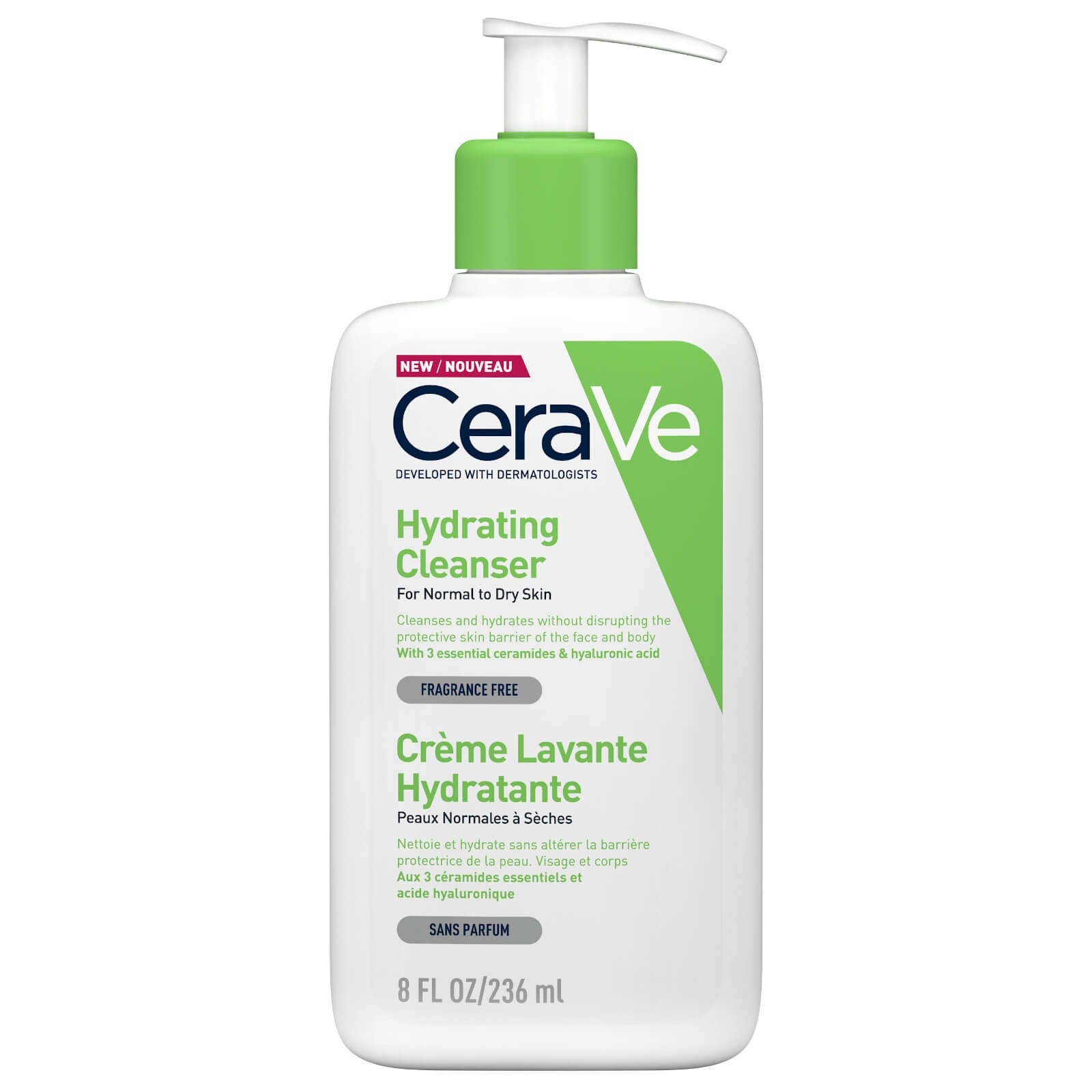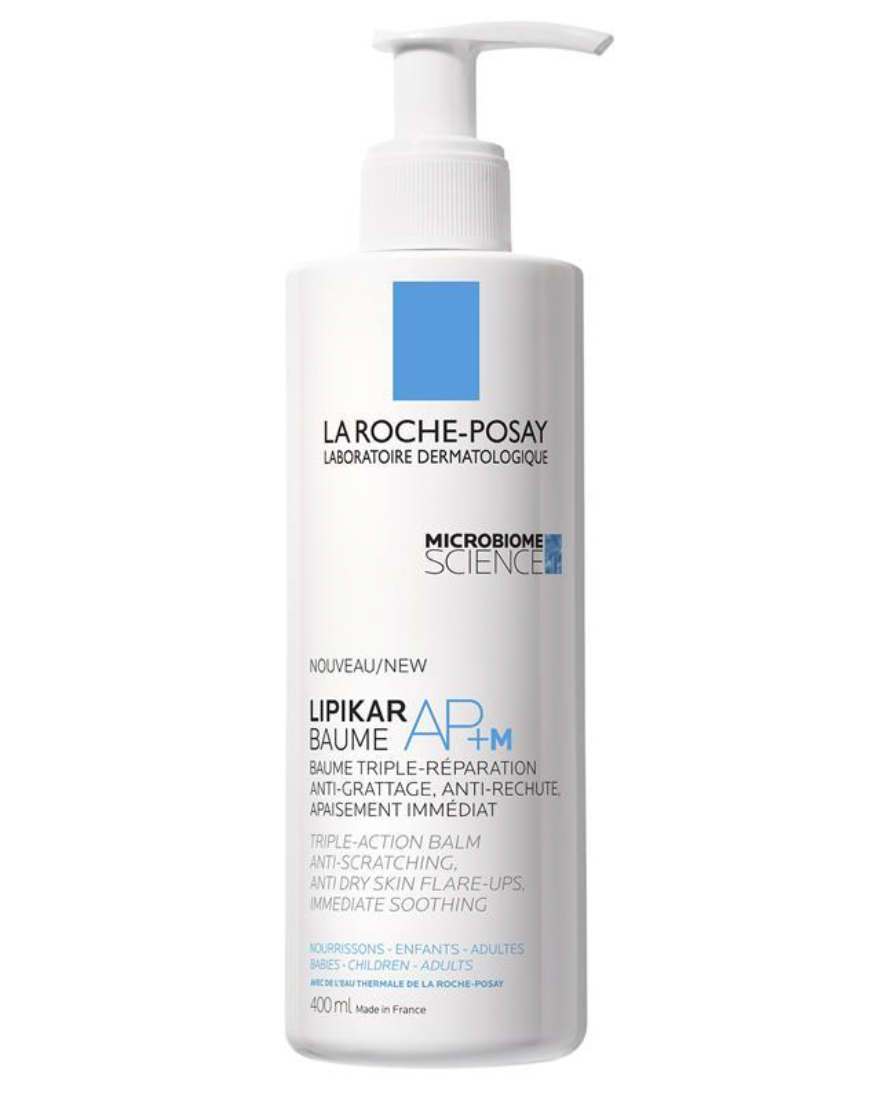At Refinery29 Australia, we’re here to help you navigate this overwhelming world of stuff. All of our picks are independently selected and curated by the editorial team, but we may earn commission or other compensation from the links on this page.
Just like acne, atopic eczema is a skin condition many of us encounter in adulthood. Characterised by itchy, dry, cracked, sore and red skin, it's extremely common according to consultant dermatologist Dr Justine Kluk, but while most of those who suffer with eczema find that things improve as they get older, with 60% of children clear by their teens, many continue to have dry skin, and some people notice it for the very first time later in life.
AdvertisementADVERTISEMENT
It's something I know all too well. Having always had excessively oily skin that was prone to breakouts most days, I suddenly developed dry, itchy, flaky and cracked patches on both my hands and eyelids, and it got me down. Trips to the GP were fruitless (there's only so much greasy, suffocating liquid paraffin a girl can slather herself in) and the thought of switching up my skincare routine when I'd pretty much perfected it for my oily complexion felt like a chore. But what I wanted to know was: what had brought it on in the first place?
"There are a number of factors that contribute to the development of atopic eczema," explains Dr Kluk. "It tends to run in families, so if one or both parents are sufferers, it is more likely that their children will develop it too, but eczema waxes and wanes by its very nature. Flare-ups can be triggered by contact with soaps, detergents and any other chemicals applied to the skin, as well as exposure to allergens and infection with certain bacteria and viruses," – but that's not all.
"There is some evidence to suggest that stress can lower the threshold for a flare-up too," continues Dr Kluk. "Other triggers include extremes of weather, being unwell and being around certain pets, dust and woollen clothing," but the way eczema manifests itself is usually very similar in everyone. "The main symptom is itching and dry and red skin," explains Dr Kluk. "When eczema is very active, it may become moist, crusted or weepy, especially on the hands and feet, but it can affect any part of the skin, including the face and eyelids. Areas that are most commonly affected are the creases of the elbows and knees, as well as the wrists, ankles and neck."
AdvertisementADVERTISEMENT
At times, treating eczema may feel like a never-ending (and very sore) battle, so if you aren't seeing results from your current treatment, it might be worth trying one or two of these dermatologist-approved remedies.
Emollients
An emollient is essentially a layer or a barrier that sits on top of the skin to prevent moisture from escaping, in turn working to prevent dry, rough, flaky skin. According to Dr Kluk, these lotions, creams and ointments are the mainstay of eczema therapy. "It involves frequent and liberal application of a moisturiser and washing with a soap substitute. Moisturiser may need to be applied several times throughout the day. They vary in how greasy they are but the drier your skin, the more greasy the moisturiser you should apply."
Steroid creams
Usually prescribed by either a dermatologist or GP, steroid creams have a bad rap because of the potential side-effects such as thinning of the skin, but they can work wonders to alleviate the symptoms of eczema. "Topical steroids are used to treat itching and inflammation (redness) associated with eczema and come in a variety of different strengths," explains Dr Kluk.
"A consultant dermatologist should always advise on which type needs to be used, as well as where to apply and for how long to prevent adverse effects such as skin thinning. Weaker topical steroids are usually prescribed for areas including the face, breasts, eyelids and armpits as the skin here is much thinner and more sensitive," continues Dr Kluk, and some, such as hydrocortisone, can be bought over the counter at pharmacies. They work even better when used in conjunction with emollients.
AdvertisementADVERTISEMENT
Calcineurin inhibitors
Don't let the technical name put you off, because if your skin isn't responding to topical steroids or your eczema is in an area that is more susceptible to the effects of skin thinning, such as eyelids, armpits and groin, calcineurin inhibitors a.k.a. inflammation blockers, might be your best bet. According to Dr Kluk, a common topical inhibitor includes prescription-only Elidel cream (although side-effects can include stinging and burning, so always listen to your GP or dermatologist when applying).
LED or oral treatment
"Those with severe or widespread eczema that isn’t responding to topical treatments may need phototherapy (otherwise known as light treatment)," explains Dr Kluk, but oral medication, like corticosteroid tablets, could also be an option. "These work by dampening down the immune system," she continues, "but are given under the close supervision of a dermatologist."
Steer clear of certain ingredients
In response to acne or complexion bugbears such as fine lines, wrinkles and hyperpigmentation, more of us are incorporating acids (such as AHAs, for example lactic and glycolic acid, and BHAs like salicylic acid) as well as retinol into our skincare routines. But Dr Kluk suggests avoiding these active ingredients in skincare if you're prone to atopic eczema flare-ups, or have developed eczema suddenly, as they could exacerbate the condition. Instead, she pinpoints ingredients such as ceramides, hyaluronic acid and urea as beneficial for eczema-prone skin. Even better? These components are found inside heaps of relatively inexpensive skincare products.
Non-comedogenic, which means it won't block pores, CeraVe's Moisturising Cream, $22.99, contains three essential ceramides to repair the skin's barrier so moisture is less likely to escape and result in dry, rough, cracked patches of skin, as well as hyaluronic acid to hydrate deep down. Recommended by dermatologists, La Roche-Posay's Lipikar Baume AP+, $33.99, contains lipids, shea butter and niacinamide (otherwise known as ultra-moisturising vitamin B3) to keep moisture under lock and key and to smooth away parched patches.
Want more? Get Refinery29 Australia’s best stories delivered to your inbox each week. Sign up here!
AdvertisementADVERTISEMENT









